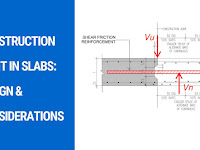Q.: If reinforcing bars have been stored outside and have a coating of rust, how much rust is acceptable?
A.: Section 12 of ASTM A 615-96a, "Standard Specification for Deformed and Plain Billet Steel Bars for Concrete Reinforcement," says that rust shall not be cause for rejection provided the weight, dimensions, cross-sectional area, and tensile properties of a hand-wire-brushed test specimen aren't less than the ASTM specification requires.
Section 7.4.2 of ACI 318-95, "Building Code Requirements for Structural Concrete," has a similar statement indicating that reinforcement with rust shall be considered satisfactory, provided the minimum dimensions (including height of deformations) and weight of a hand-wire-brushed test specimen aren't less than applicable ASTM specification requirements.
Q: The project inspector is requiring us to wire-brush mill scale and rust off all our rebar. Although the rebar has been at the site for a couple of weeks, we don't think the rust is that heavy or will interfere with the bond between the concrete and steel. Any suggestion? We're tired of brushing rebar.
A: Fortunately, there are a couple of standards to assist you. The ASTM standard specification for deformed steel reinforcement and the Concrete Reinforcing Steel Institute (CRSI) Manual of Standard Practice both give the same information: Reinforcing bars with rust, mill scale, or a combination of both should be considered as satisfactory, provided the minimum dimensions, weight, and height of deformation of a hand-wire-brushed test specimen are not less than the applicable ASTM specification requirements. This inspection criteria recognizes studies that have shown mill scale and rust enhance the bond between concrete and steel. for document Concrete Reinforcing Steel Institute (CRSI) Manual of Standard Practice PDF download.
SNRN 10/13/2020 Admin Bandung IndonesiaEqipment
Procedure
Precaution
Conclusion
How to check suitability of water for concrete mixing ?
Types of Joints in Concrete Constructions
Definition of cover block use in construction
Types of Cracks in Concrete
Which is the Better Building Material Concrete or Steel?
There are three main types of cracks in concrete. Each has its own cause and strategies to prevent or minimize.
Plastic shrinkage cracks. These occur during the first few hours when the concrete is still in a “plastic” state. They are caused when the surface moisture evaporates too quickly, usually during hot or windy weather. Synthetic fiber additives can help reduce this type of cracking, but do little once the concrete has cured.
Drying shrinkage cracks. These occur as moisture leaves the concrete after the slab has hardened. The main cause is concrete that is too wet, referred to as a “high-slump” mix. The best solution is to use less water in the concrete mix. Concrete suppliers sometimes add water to make the concrete easier to work with, but this weakens the concrete.
Welded wire mesh can also help reduce shrinkage cracking, but only if it is placed in the middle or upper half of the slab, but at least 2 inches below the surface. Wire mesh also helps keep small cracks from growing. In too many cases, however, the wire mesh ends up on the bottom of the slab where it does nothing.
Shrinkage cracking can be managed by the use of control joints placed in the slab. Some contractors cut or form a grid of small grooves in the slab to keep the shrinkage cracks in an orderly grid, which looks better than random cracks, but functions the same way. If you are placing tile on the slab, it’s important the control joint line up with a control joint in the tile easier said than done. So random cracking might be a better approach for tile.
Structural cracks. Concrete can support a lot of weight in compression, but is weak in tension. For example, a concrete wall can support tons of weight from above, but will crack easily if pushed sideways forcing it to bend. Similarly, a slab will crack if too much weight is placed in one spot, or if the soil settles unevenly, bending the slab.
The best protection against structural cracking in residential structures is good compaction of the soil and gravel underneath the slab. In addition, rebar should be placed in the footings around the perimeter of the slab and at post bases within the slab.
SNRN 4/30/2020 Admin Bandung Indonesia
Type of Cracks in Concrete Slab
What are the advantages of post-tensioned slabs?
1. Architectural Benefits
Post-Tensioned Slab has an advantage over others as it makes a very efficient base for floor design with thin slabs and columnless spaces in larger spans. It provides an architect the freedom to work freely with his designs.
2. Commercial Spaces
Post-tensioning results in thinner concrete slabs making the valuable savings in floor to floor height available as additional floors.This can provide extra rentable space within the same overall building height.
3. Reduces Deadload
As the post-tensioned slabs have lesser thickness, the quantity of concrete and reinforcement used is reduced upto 20% – 30% when compared to conventional concrete slabs.
4. Structural Durability
Post-Tensioned slabs show reduced cracking, improved durability and lower maintenance costs. Their deflection can be controlled by varying the amount of post-tensioning to balance any portion of applied loads immediately after stressing.
5. Popularity
The demand for Post-Tensioned slabs, throughout the world, continues to increase because of the significant benefits for developers, architects, engineers, contractors and end users.
SNRN 4/23/2020 Admin Bandung Indonesia
Advantages of Post Tension Slab
Concrete Curing Role
The construction of a new road – whether from asphalt or concrete
requires the production of an excellently bonded pavement structure,
beginning with a stable base layer and going all the way to a precisely
leveled surface course.
Please download this book to read more
Sona 12/26/2018 Admin Bandung Indonesia


































